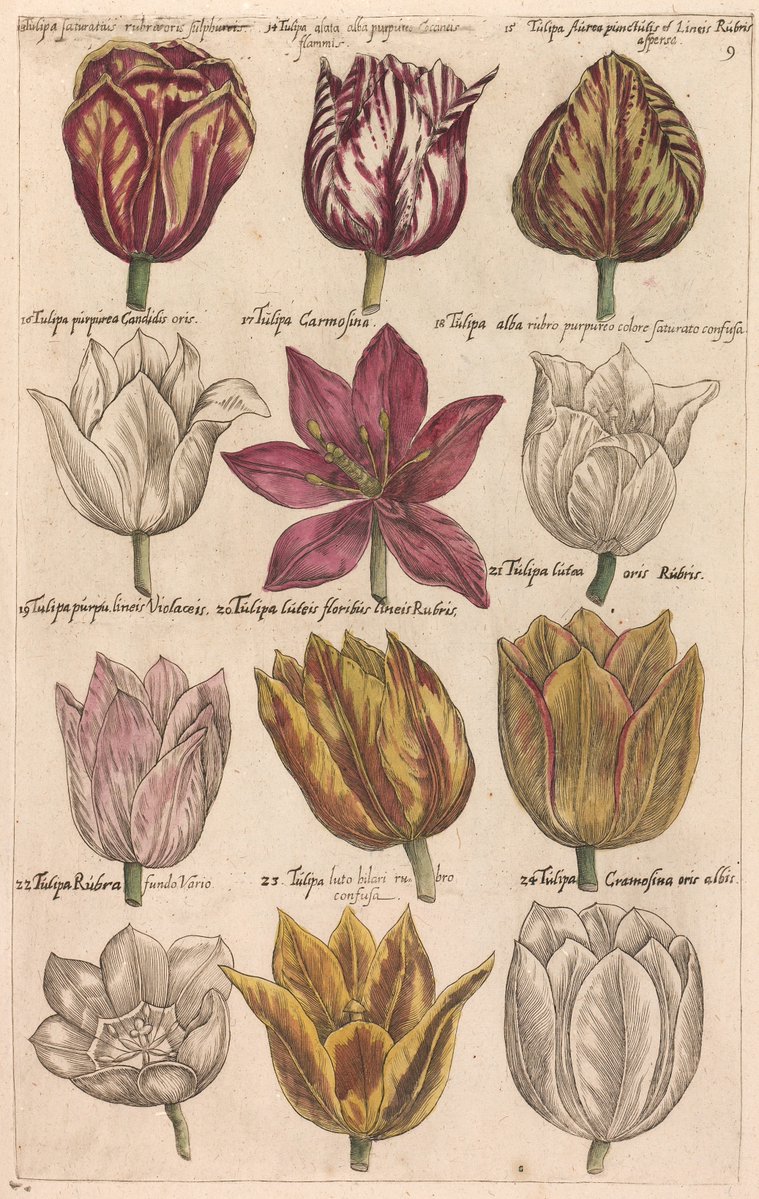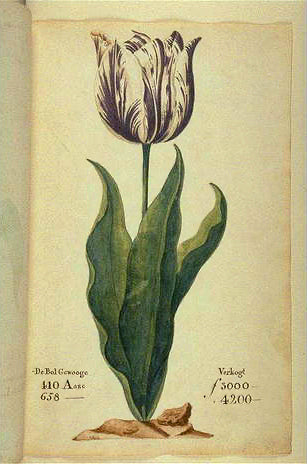
The First Commercial Catalog In Europe

Tulips were actually the driver behind Europe's first ever commercial catalogue.
Although Amsterdam and Tulips now seem as synonymous as Holland and windmills, the flower is not originally Dutch. It reached the low countries in the late 16th century having traveled from Central Asia via Turkey and Vienna. Fortunately, the flower fit admirably with the spirit of the Dutch golden age and the associated craze for 'curiosities'.
Initially, the Tulip was only cultivated with the assistance of gardeners employed by wealthy 'burghers', as they were the only ones able to afford a garden for pleasure. However, admiration for the flower began to expand beyond the upper class with the publication of books and manuals highlighting its unique beauty. Emanuel Sweert's Florilegium is perhaps the best known of those books. In fact, it is now believed to be the first commercial nursery catalog in Europe's history.
In life, Emanuel Sweert was successful as both a botanist and a businessman. He lived primarily in Amsterdam on the Bloemgracht, a canal in one of the new layouts of the then rapidly expanding city. While not the first to have business in selling curiosities like shells, fossils, and bulbs; he ws the first to recognize the true commercial value of the Tulip.
His superbly hand-colored Florilegium of 1612 helped to broaden the potential market for Tulips. Magnificent garden Tulips appear in the book, feathered and flamed in gorgeous colors. Technology also played a key role in its popularity, as Sweert used engravings on copper plates (versus older woodblocks) in publication, allowing for much more detail to be captured.
Sweert used his catalog to whet his customers' appetites for his wares. In modern terms, they were point-of-sale materials or classy advertisements. But in the dark days of October and November, when bulbs went on sale, potential customers needed a vision of what was inside the brown, round bulbs, and Sweert's publication became a bestseller (including many reprints in the early 17th century).

